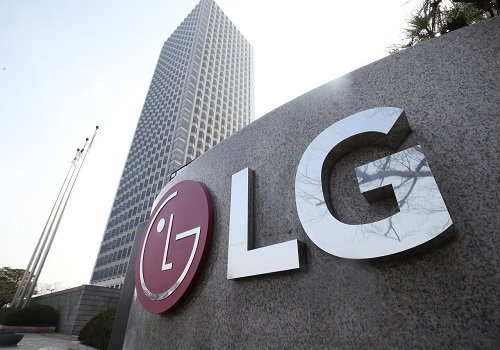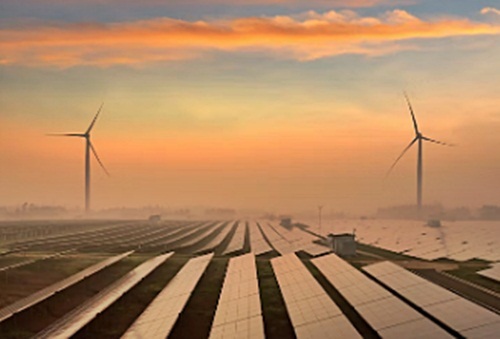Turmeric trading range for the day is 14016-14660 - Kedia Advisory

Follow us Now on Telegram ! Get daily 10 - 12 important updates on Business, Finance and Investment. Join our Telegram Channel
Gold
Gold prices surged 0.87% to settle at Rs.76,693, buoyed by heightened safe-haven demand as geopolitical tensions escalated. The ongoing Russia-Ukraine conflict intensified, with Ukraine deploying advanced Western weapons, while the U.S. vetoed a U.N. resolution on the Gaza ceasefire, further elevating global uncertainty. Market expectations of a 25-basis-point rate cut by the Federal Reserve in December stand at 56%, as per CME's Fedwatch tool, adding a monetary policy angle to gold's bullish sentiment. India’s gold demand showed a slowdown post-festive season, with dealers charging a premium of up to $3 per ounce compared to a $1 premium last week. In contrast, China's central bank continued its hiatus from gold purchases for a sixth consecutive month, while discounts in Chinese markets widened to $15-$17 per ounce. Global gold demand remained stable at 1,176.5 metric tons in Q3, according to the World Gold Council (WGC), as higher investment activity balanced lower jewelry consumption. Physically-backed ETFs saw inflows of 95 tons, marking their first positive quarter since Q1 2022, while bar and coin investments fell by 9%. On the supply front, mine production increased by 6%, achieving a Q3 record, and recycling activity rose by 11%. Technically, the market witnessed short covering, with a notable 15.75% drop in open interest to settle at 7,109 contracts. Gold has immediate support at Rs.76,285, and a breach below could test Rs.75,880. Resistance lies at Rs.76,930, with potential to test Rs.77,170 on further upside momentum.
Trading Ideas:
* Gold trading range for the day is 75880-77170.
* Gold rose driven by safe-haven demand amid escalating tensions in the Russia-Ukraine conflict
* Investors awaited remarks from Federal Reserve policymakers on the interest rate outlook.
* US vetoed a U.N. Security Council resolution calling for a ceasefire in Gaza, adding to ongoing geopolitical tensions.
Silver
Silver prices edged down by 0.18% to settle at Rs.89,925, as traders remained cautious amid U.S. economic updates and political developments. Initial jobless claims were below expectations, reinforcing the labor market's resilience. However, the Philly Fed Manufacturing Index unexpectedly turned negative, signaling potential economic headwinds. Comments from Fed officials highlighted a cautious approach to rate cuts, with concerns over inflation vulnerability due to cost shocks, including wages. Globally, silver demand remains robust, with the Silver Institute forecasting a 4% reduction in the structural deficit to 182 million ounces in 2024. Industrial applications, including electronics, solar panels, and electric vehicles, alongside a recovery in jewelry consumption, are expected to drive demand to 1.21 billion ounces. However, physical investment in silver is projected to decline by 16%. Supply-side growth of 2%, led by higher mine production in Mexico, Chile, and the U.S., and a 5% increase in recycling from silverware scrap, is set to partially offset demand growth. India's silver imports surged in 2024, nearly doubling to 4,554 metric tons in the first half compared to 560 tons a year ago, driven by strong demand from the solar and electronics sectors and depleted inventories from 2023. This trend could further support global silver prices, already up 32% this year. Technically, the market witnessed long liquidation, with a 3.64% drop in open interest to settle at 18,671 contracts. Silver has immediate support at Rs.89,225, with further downside possible to Rs.88,525. Resistance is likely at Rs.90,775, and a breakout could test Rs.91,625.
Trading Ideas:
* Silver trading range for the day is 88525-91625.
* Silver steadied as traders await any updates on Donald Trump's key political appointments for the new administration.
* The number of individuals filing for unemployment benefits in the US fell by 6,000 from the previous week to 213,000
* Fed's Barkin says US is vulnerable to inflation shocks
Crudeoil
Crude oil prices rose by 1.32% to settle at Rs.5,905, supported by escalating geopolitical tensions between Russia and Ukraine. Reports revealed Russia launched an intercontinental ballistic missile at Ukraine, intensifying conflict in the region. Additionally, traders are focusing on the December 1st OPEC+ meeting amid speculation of delays in planned output increases. The temporary output reduction of 28%-30% at Kazakhstan's Tengiz oil field due to repairs further tightened global supplies, with production expected to normalize shortly. On the demand-supply side, the International Energy Agency (IEA) warned of a potential supply deficit of over 1 million barrels per day (bpd) by 2025, even if OPEC+ cuts persist. Global oil demand is projected to grow by 990,000 bpd next year, while U.S. demand is expected to rise to 20.5 million bpd, slightly below previous forecasts, according to the U.S. Energy Information Administration (EIA). Inventory data showed a mixed picture. U.S. crude oil inventories rose by 0.545 million barrels last week, exceeding expectations, while gasoline stocks climbed by 2.054 million barrels, surpassing forecasts. However, distillate stockpiles dropped by 0.114 million barrels, and crude stocks at Cushing declined by 0.140 million barrels, indicating localized supply tightness. Technically, the market witnessed short covering with a 4.65% drop in open interest, settling at 11,432 contracts. Crude oil prices have support at Rs.5,834, with potential downside to Rs.5,764. Resistance is likely at Rs.5,966, and a breakout could see prices testing Rs.6,028.
Trading Ideas:
* Crudeoil trading range for the day is 5764-6028.
* Crude oil rose driven by escalating tensions between Russia and Ukraine.
* Traders are also closely monitoring the upcoming OPEC+ meeting on December 1st, amid speculation that the cartel may delay output increases.
* Data from the EIA showed that US crude oil inventories increased by 0.5 million barrels last week
Naturalgas
Natural gas prices surged by 3.81% to settle at Rs.278.2, supported by colder weather forecasts that boosted heating demand and expedited the storage withdrawal season. U.S. gas output in November dropped to an average of 100.7 billion cubic feet per day (bcfd), down from October's 101.3 bcfd and well below the record 105.3 bcfd set in December 2023. This marks a continued downward trend, with 2024 output projected to decline for the first time since 2020, while demand is expected to reach record highs of 90.0 bcfd. European natural gas futures rose above €48 per megawatt-hour, the highest in a year, amid forecasts of intense winter storms and risks of supply disruptions. Russian gas exports to Europe via Ukraine remain uncertain, as flows through Austria and Slovakia stayed below pre-halt levels. Rising LNG feed gas flows to a 10-month high in the U.S. further limited domestic supply, intensifying price pressures. The EIA's Short-Term Energy Outlook projects U.S. natural gas consumption to rise by 1% in 2024, driven by colder temperatures and increased demand for heating. However, production is expected to decline slightly, reflecting reduced drilling activities following historically low spot prices earlier this year. U.S. natural gas stocks at 3,969 billion cubic feet are 3.7% higher than last year but began the withdrawal season earlier than expected. The market witnessed fresh buying, with open interest rising by 4.62% to 10,262 contracts. Natural gas has support at Rs.268.8, with a potential test of Rs.259.3. Resistance is seen at Rs.289.8, and a breakout could push prices to Rs.301.3.
Trading Ideas:
* Naturalgas trading range for the day is 259.3-301.3.
* Natural gas prices soared over as forecasts of colder weather lifted the outlook on heating demand.
* Supply concerns in Europe ahead of the turn of the year drove LNG feed gas flows to rise to a 10-month high, limiting domestic supply.
* Russian gas exports to Europe via Ukraine were stable despite ongoing contract disagreements between Gazprom and the Austrian OMV
Copper
Copper prices rose by 0.81% to settle at Rs.824.45, supported by supply concerns and stronger demand signals. Peru, the world’s second-largest copper producer, reported a 1.2% decline in September production to 232,423 metric tons, while its government revised 2024 output expectations to 2.8 million tons, down from 3 million tons. Meanwhile, the global refined copper market showed a deficit of 131,000 metric tons in September compared to a surplus of 43,000 tons in August, according to the International Copper Study Group (ICSG). Adjusted for Chinese bonded warehouse inventory changes, the deficit reached 149,000 metric tons in September. China, the largest copper consumer, reported unwrought copper imports of 506,000 metric tons in October, a 1.1% increase from the same period last year, driven by seasonal demand and declining domestic inventories. For the first ten months of 2024, imports were up 2.4% at 4.6 million tons. Refined copper production in China increased by 5.4% year-on-year to 10.04 million tons in the first nine months of 2024, while copper concentrate imports for October rose marginally by 0.2% to 2.31 million tons. The market experienced short covering, with open interest declining by 35.26% to 3,375 contracts. Copper has immediate support at Rs.816.9, with further downside potential to Rs.809.2. Resistance is seen at Rs.831.4, and a breakout above this level could push prices to Rs.838.2.
Trading Ideas:
* Copper trading range for the day is 809.2-838.2.
* Copper climbed as Peru copper output edges down 1% in September
* In China, the People's Bank of China left key lending rates unchanged, in line with expectations
* Investors kept an eye on geopolitical developments following Russia’s decision to lower the threshold for a potential nuclear strike amid its escalating conflict.
Zinc
Zinc prices rose by 0.48% to settle at Rs.280.55, driven by market rumors of potential production cuts and improved consumption. Spot premiums remained elevated, offering additional support. Winter shutdowns in northern Chinese mines prompted smelters to stockpile zinc ore to ensure stable production during the Chinese New Year, typically causing increased demand from October to December. However, the mismatch in zinc ore supply and demand has become evident. Imported zinc concentrate in October 2024 fell by 18.17% month-on-month and 23.85% year-on-year to 331,000 metric tons. Cumulative imports from January to October declined by 19.74% year-on-year to 3.18 million metric tons. China’s industrial output rose by 5.3% year-on-year in October, slightly below market expectations, while credit aggregates also disappointed. Zinc inventories in Shanghai, Guangdong, and Tianjin fell due to limited warehouse arrivals, with the seven-region inventory declining by 9,200 metric tons during the week. Meanwhile, the global zinc market deficit narrowed to 79,500 metric tons in September from 85,000 tons in August, according to ILZSG. Year-to-date, the market faced a deficit of 8,000 metric tons compared to a 358,000-ton surplus during the same period last year. The market saw short covering with a 31.83% drop in open interest, settling at 1,418 contracts. Zinc prices find support at Rs.277.6, with a further downside test possible at Rs.274.6. Resistance is pegged at Rs.282.3, and a break above this level could drive prices toward Rs.284.
Trading Ideas:
* Zinc trading range for the day is 274.6-284.
* Zinc prices rose after market rumors of production cuts have resurfaced.
* Further consumption slightly improved, and spot premiums remained high, offering some support to prices.
* Chinese industrial output rose by 5.3% annually in October.
Aluminium
Aluminium prices edged higher by 0.47% to settle at Rs.245.4, supported by supply constraints and robust export performance. China's decision to cancel the 13% export tax rebate for certain aluminium products starting December 1 has created a cautious supply outlook. Additionally, lower bauxite output from Guinea, Australia, and Jamaica has tightened raw material availability, pushing prices near record highs. Chinese smelters are grappling with reduced ore inventories, reaching their lowest since 2015. On the supply front, global primary aluminium output rose by 1.3% year-on-year in October to 6.221 million tons, per International Aluminium Institute data. China's aluminium production for October rose 1.6% year-on-year to 3.72 million metric tons, while cumulative production for the first ten months reached 36.39 million tons, up 4.3%. Despite rising raw material costs, China's producers ramped up operations amid better profitability and robust demand. In October, major production regions like Shandong and Inner Mongolia maintained high operating rates, supplemented by new capacity additions in southwestern China. China's unwrought aluminium and aluminium product exports surged by 17% year-on-year to nearly 5.5 million tons in the first ten months. October exports alone grew 31% year-on-year to 577,000 tons, reflecting strong demand from global markets. The market witnessed short covering, with open interest dropping by 14.01% to 1,945 contracts. Aluminium prices find support at Rs.243.8, with further downside likely at Rs.242. Resistance is observed at Rs.246.8, and a move above this level could push prices towards Rs.248.
Trading Ideas:
* Aluminium trading range for the day is 242-248.
* Aluminium held firm after China decided to remove export tax rebates.
* China said it would cancel the 13% export tax refund for some aluminium products starting Dec. 1.
* Support seen amid lower supply from major producers, while markets continued to assess the impact of Chinese stimulus.
Cottoncandy
Cottoncandy prices slipped by 0.22% to settle at Rs.54,360 amid weak demand in yarn markets and payment constraints. India's cotton production for 2024/25 is projected to decline by 7.4% to 30.2 million bales due to reduced acreage and crop damage from excessive rainfall. Similarly, USDA has revised India's cotton production forecast to 30.72 million bales, reducing ending stocks to 12.38 million bales. Meanwhile, global production estimates rose by over 200,000 bales, driven by increased output in China, Brazil, and Argentina, despite reductions in the U.S. and Spain. India's cotton acreage has dropped by 9% this year, falling to 11.29 million hectares from 12.69 million hectares a year earlier. Farmers in Gujarat, a key cotton-producing state, shifted focus to groundnuts for better returns. Reduced domestic production will likely increase imports to 2.5 million bales, up from 1.75 million bales last year, while exports are expected to decline to 1.8 million bales from 2.85 million. On the global front, U.S. cotton production was cut by 300,000 bales to 14.2 million due to hurricane damage, while mill use and exports were also reduced. However, global ending stocks for 2024/25 were slightly reduced to 76.3 million bales due to lower Chinese imports. The market is under long liquidation, as open interest dropped by 9.29% to 127 contracts. Prices are supported at Rs.53,600, with further downside potential to Rs.52,840. Resistance is seen at Rs.54,910, and a breakout above could test Rs.55,460.
Trading Ideas:
* Cottoncandy trading range for the day is 52840-55460.
* Cotton dropped as yarn markets face weak demand and payment constraints.
* India's cotton production in 2024/25 is likely to fall by 7.4% from a year ago to 30.2 million bales.
* Cotton production is projected to increase in China, Brazil, and Argentina, more than offsetting reductions in the US and Spain – USDA
* In Rajkot, a major spot market, the price ended at 25791.35 Rupees dropped by -0.19 percent.
Turmeric
Turmeric prices surged by 3.03%, settling at Rs.14,336, as traders covered short positions. This recovery followed a period of weakness caused by subdued demand and higher arrivals in major markets. The expected 30-35% increase in acreage for the upcoming season suggests a potential production boost, exerting downward pressure on prices. However, this is countered by reports of crop damage due to excessive rainfall, which may limit the downside as losses could exceed earlier estimates. Favorable weather in key growing regions like Telangana and Vidarbha is currently supporting crop growth, but heavy rains earlier in the season may still impact yields. Market supply remains a critical factor. With sowing areas significantly higher in Maharashtra, Telangana, and Andhra Pradesh, the total cultivated area is expected to rise from last year's 3-3.25 lakh hectares to 3.75-4 lakh hectares. Despite the anticipated production of 70-75 lakh bags in 2025, an absence of carryover stocks could lead to a supply deficit. Exports rose marginally by 0.96% during April-September 2024 compared to the same period last year, while imports increased sharply by 184.73%, signaling mixed market dynamics. Technically, the turmeric market saw a 5.7% drop in open interest, indicating short covering. Prices are supported at Rs.14,006, with further downside potentially testing Rs.13,678. On the upside, resistance is pegged at Rs.14,566, and a move above this could drive prices to Rs.14,798.
Trading Ideas:
* Turmeric trading range for the day is 14016-14660.
* Turmeric gains on low level buying after some pressure seen due to lower demand amid a rise in arrivals.
* The expected acreage for the upcoming season is estimated to be 30-35% higher than last year.
* Recent weather conditions, which include dry weather followed by light rains, are benefiting crop growth.
* In Nizamabad, a major spot market, the price ended at 14147.2 Rupees gained by 0.37 percent.
Jeera
Jeera prices rose by 1.52% to close at Rs.25,385, supported by short covering after recent declines driven by higher arrivals. Approximately 15,000 bags of cumin are arriving daily in Unjha, contributing to supply pressure. Farmers still hold around 35% of the current season's stock, while carryover stock at the beginning of the next season is estimated at 20 lakh bags. However, export prospects look promising, with expectations of increased demand post-Diwali, particularly during November-December. Production challenges may also support prices, as cumin production is projected to decrease by 10%, with cultivation in Rajasthan down by 10-15%. India remains the most attractive global supplier of cumin due to its competitive pricing at $3,050 per tonne, significantly cheaper than Chinese cumin, which is priced $200-250 higher. This pricing advantage, coupled with geopolitical tensions in the Middle East, has driven robust export growth. Data from the Federation of Indian Spice Stakeholders (FISS) shows cumin seed exports during July-September at 52,022 metric tonnes, up 128% year-on-year. Overall exports from April to September surged by 70.02% to 119,249.51 tonnes compared to the same period last year. Technically, the market saw fresh buying, with open interest increasing by 2.12% to 2,169 contracts. Jeera finds support at Rs.25,150, with further downside potentially testing Rs.24,900. Resistance is likely at Rs.25,570, and a breakout above this level could lead to prices testing Rs.25,740.
Trading Ideas:
* Jeera trading range for the day is 24730-25850.
* Jeera prices dropped as arrival has increased.
* There is a possibility of 25 percent reduction in cumin sowing in Gujarat
* Carryover stock of 20 lakh bags of cumin is estimated in the new season
* In Unjha, a major spot market, the price ended at 25332.85 Rupees dropped by -0.09 percent.
Views express by all participants are for information & academic purpose only. Kindly read disclaimer before referring below views












 320-x-100_uti_gold.jpg" alt="Advertisement">
320-x-100_uti_gold.jpg" alt="Advertisement">









